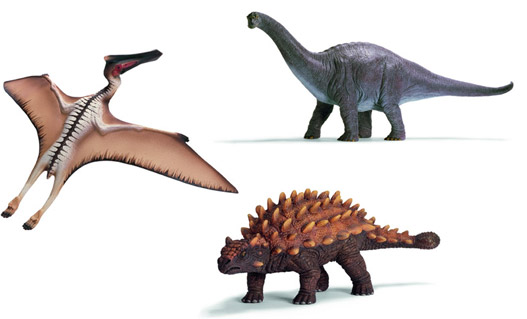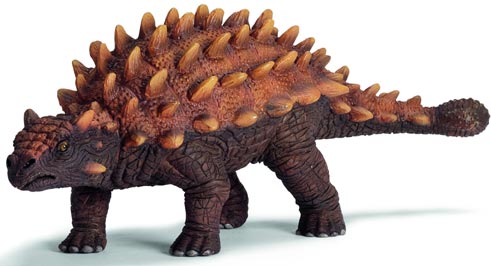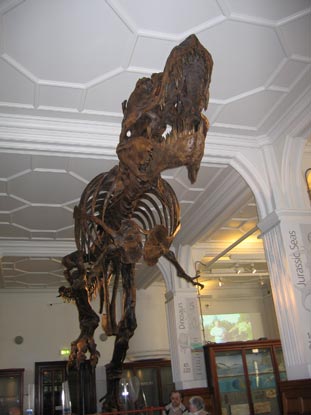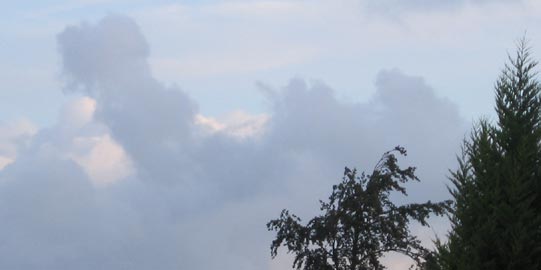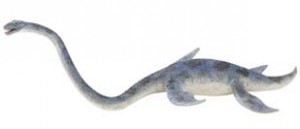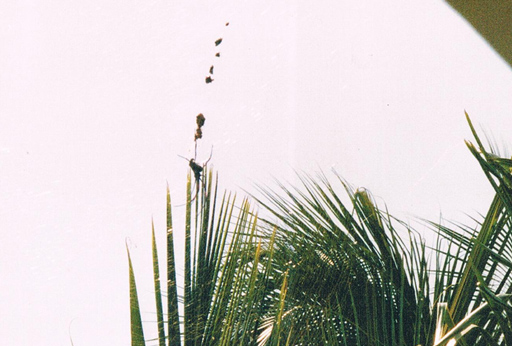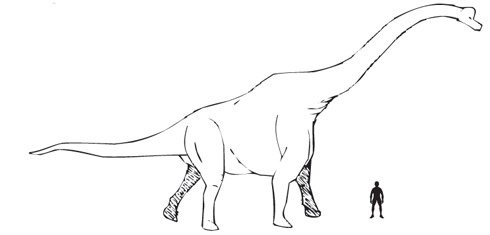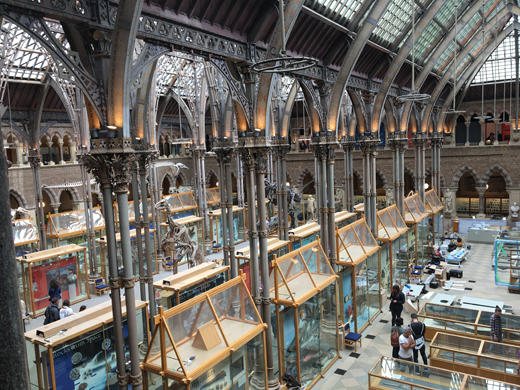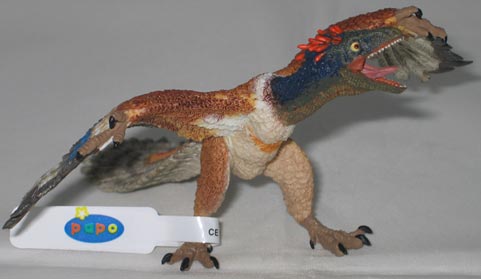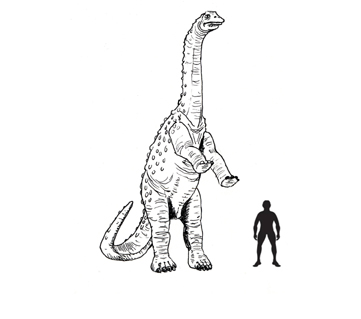New Study adds Weight to the Tale of the Ankylosaurus Tail
When you share a habitat with tyrannosaurs it may be a good survival strategy for herbivores to be able to look after themselves. Ankylosaurs when in danger from a predator faced their attacker with their tail clubs swinging, this is the conclusion from a new study into the tails of armoured dinosaurs from a team of Canadian researchers.
Ankylosaur Tail Clubs
In a paper published in the on line scientific journal PLoS One by University of Alberta Department of Biological Sciences member Victoria Megan Arbour, the tails of a number of different sized late Cretaceous ankylosaurs are compared and their potential impact forces measured.
Scientists have speculated that the large bony clubs on the end of the tails of many different types of ankylosaur may well have helped these relatively slow moving animals fend off attacks from bipedal predators such as Tyrannosaurus rex.
Fighting Tyrannosaurus rex
Studies carried out by British scientists a few years ago concluded that the forces generated by a large Ankylosaurus tail, swung through a lateral arc would be capable of breaking the leg bones of an adult Tyrannosaurus rex. Indeed, the largest fully mounted Tyrannosaurus rex skeleton known to date (“Sue” in the Chicago Museum), had a broken fibula that had subsequently healed.
It has been suggested that this injury had been caused by a blow from an ankylosaur’s tail, although the exact nature of this pathology is difficult to determine and the healing was complicated by a bacterial infection (osteomyelitis). Such are the difficulties encountered when trying to interpret what different pathologies on a fossilised skeleton can tell scientists about that animal’s way of life.
New Study Used CT Scans
This new study used computerised tomographic scans (CT scans) so that the scientists could examine the internal structure of the bones within an ankylosaur’s tail. The researchers studied the way in which the caudal vertebrae were interlocked and the structure of the ossified tendons that gave the tail its rigidity. Using computer models and statistical analysis the researchers were able to calculate the power of a swing from a large ankylosaur tail and the potential damage an impact from the bony club on the end of the tail might have been capable of causing.
The team found that the tail could be moved to a 100-degree angle sideways, though vertical mobility was a bit more limited. Being able to swing a tail club out sideways may have acted as a useful deterrent to stop an attack from a large, bipedal predator such as a Tyrannosaurus rex.
An Illustration of an Ankylosaurus Fighting with a Tyrannosaurus
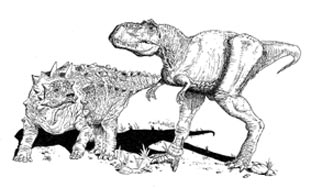
Picture credit: Mike Fredericks
Morphology of the Ankylosaurid Tail Club
The lead author of the paper, Ms Arbour writes in the paper:
“The gross and internal morphology of ankylosaurid tail clubs suggests that these structures evolved for delivering forceful impacts. Muscle scars on the pelvis suggest that a large M. longissimus caudae was present, which may have resulted in a powerful swing. Ankylosaurid caudal vertebrae are lightly constructed, resulting in a slender tail. However, ankylosaurids with average to large knobs [bony osteoderms on the tail end], were able to generate large impact forces”.
Using a relatively simplified model the team were able to assess the potential impact damage of a range of different sized ankylosaur tail clubs.
The models used assumed that the swinging action of the tail was driven by the tail muscles and that the hips and powerful hind limbs of the ankylosaur were not directly involved in generating the swinging motion. In this instance, the simplified model very probably underestimates the impact force of this dinosaur’s tail club. The paper discusses the possibility of hips and hind limbs being involved in generating the tail swing and concludes that ankylosaurs probably did use their massive back sides to help generate a powerful swing.
The Force Required to Break Bone
The smaller bony clubs, assumed to have come from immature adults and juveniles were not capable of generating the impact forces required to break bone. For Ms Megan and her colleagues, another reason for the evolution of large tail clubs may need to be considered. As well as interspecific defence (i.e. large tail clubs used by ankylosaurs to defend themselves from predators), these clubs may have been used for intraspecific purposes. If the largest clubs are associated with large, mature adults the clubs could have been used in ritual fights to decide mating rights and other social behaviour issues.
The Canadian team comment on this possibility, stating that the clubs probably grew and developed as the animal’s grew and extant species such as giraffes use their necks in fights amongst males, so could the tail clubs of ankylosaurs also be used for intraspecific contests? The Canadian team hope to study the rib bones of ankylosaurs for signs of trauma and injury that may have been caused by intraspecific fights.
The Impact Force of Ankylosaur Tail Clubs
It is interesting to compare this study on the impact forces of ankylosaur tails with the recent study on the “sweet spot” of glyptodonts and their armoured tails. This work, published recently in the scientific journal the Proceedings of the Royal Society – Biology, from a team of South American researchers demonstrated that the armoured tails of glyptodonts had evolved into very efficient and effective tail clubs with a “sweet spot” often associated with the largest tail spike, an adaptation that permitted these mammals to inflict maximum damage on any other animal that can too close.
The author’s of this particular paper compared the armoured tails of these prehistoric mammals to the precisely engineered sports equipment used by professional tennis players and such like.
To read this article: Prehistoric Mammals Anyone for Tennis?
T. rex Injury
The nature of the Sue T. rex injury, the badly broken fibula (if indeed the pathology does represent a fracture), is somewhat puzzling, if it is assumed that this particular injury was caused by the blow from an ankylosaur’s tail. The fibula was broken along nearly half its length, this indicates that if this pathology was the result of a fight with an ankylosaur the blow was not delivered very precisely, or the weapon itself was not designed for delivering a blow with concentrated force in a confined target area. Such damage caused by a blow from the bony tail club would have been limited to the direct impact area, the trauma of the impact would not have been transferred along 50% of the length of the bone.
However, it is possible that the sort of forces capable of being generated by a large Ankylosaurus with a subsequently large bony tail club, would have been able to cause such an injury with effectively half the fibula being hit at the same time by one, massive powerful blow.
A Model of the Armoured Dinosaur Ankylosaurus
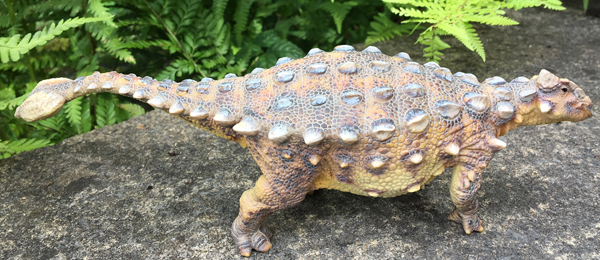
“Sede” the PNSO Ankylosaurus dinosaur model. The formidable tail club on the end of the tail. Picture credit: Everything Dinosaur.
Picture credit: Everything Dinosaur
To view the PNSO range of prehistoric animal models and figures: PNSO Age of Dinosaurs Models and Figures.
